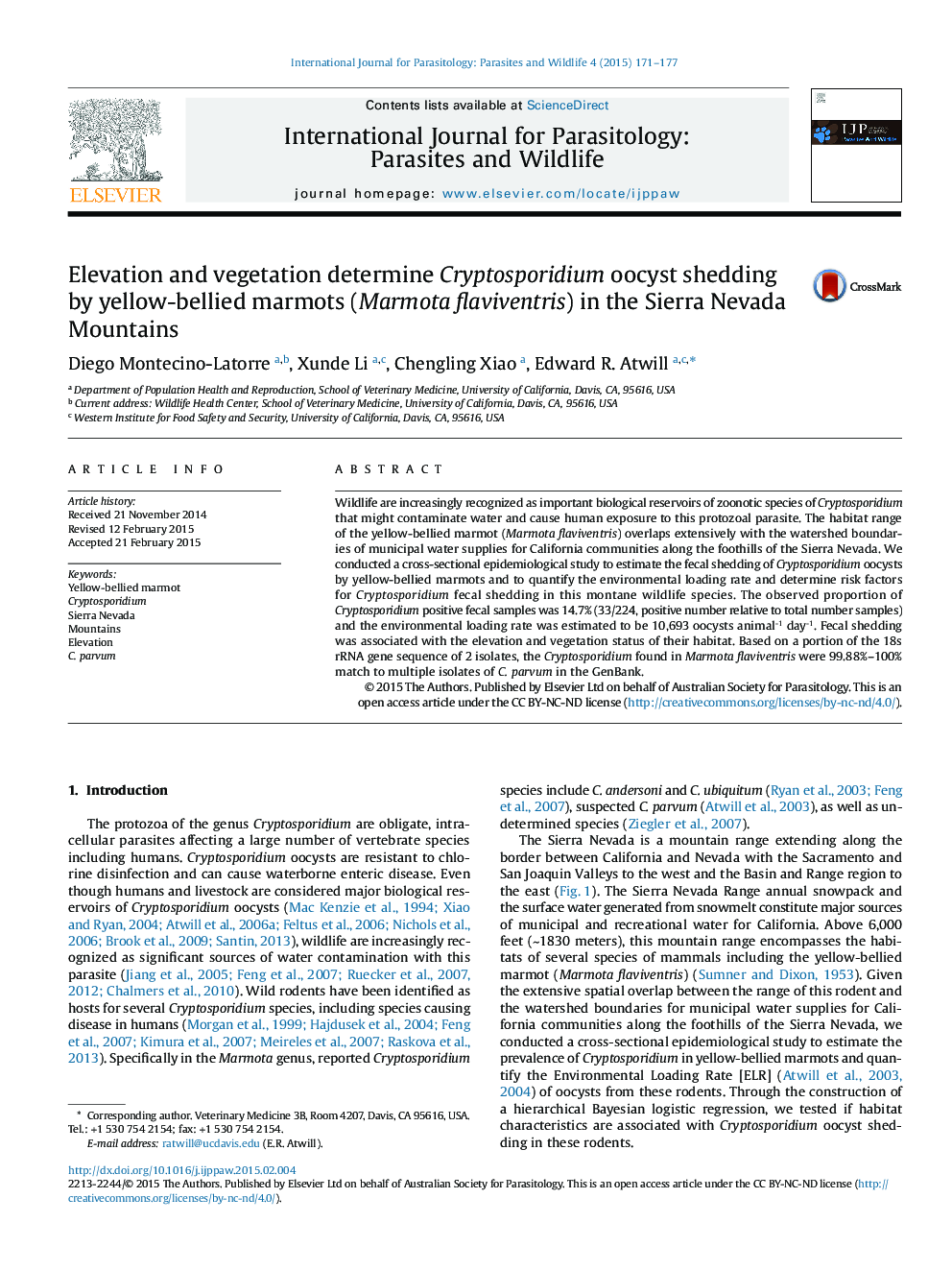| Article ID | Journal | Published Year | Pages | File Type |
|---|---|---|---|---|
| 2055252 | International Journal for Parasitology: Parasites and Wildlife | 2015 | 7 Pages |
•Yellow-bellied marmots of Sierra Nevada Mountain shed Cryptosporidium oocysts.•Oocysts loads are low compared to other mammals in California.•Shedding of oocysts is associated with altitude and vegetation type.•Cryptosporidium oocysts were 99.9%–100% match to Cryptosporidium parvum.
Wildlife are increasingly recognized as important biological reservoirs of zoonotic species of Cryptosporidium that might contaminate water and cause human exposure to this protozoal parasite. The habitat range of the yellow-bellied marmot (Marmota flaviventris) overlaps extensively with the watershed boundaries of municipal water supplies for California communities along the foothills of the Sierra Nevada. We conducted a cross-sectional epidemiological study to estimate the fecal shedding of Cryptosporidium oocysts by yellow-bellied marmots and to quantify the environmental loading rate and determine risk factors for Cryptosporidium fecal shedding in this montane wildlife species. The observed proportion of Cryptosporidium positive fecal samples was 14.7% (33/224, positive number relative to total number samples) and the environmental loading rate was estimated to be 10,693 oocysts animal-1 day-1. Fecal shedding was associated with the elevation and vegetation status of their habitat. Based on a portion of the 18s rRNA gene sequence of 2 isolates, the Cryptosporidium found in Marmota flaviventris were 99.88%–100% match to multiple isolates of C. parvum in the GenBank.
Graphical AbstractFigure optionsDownload full-size imageDownload as PowerPoint slide
